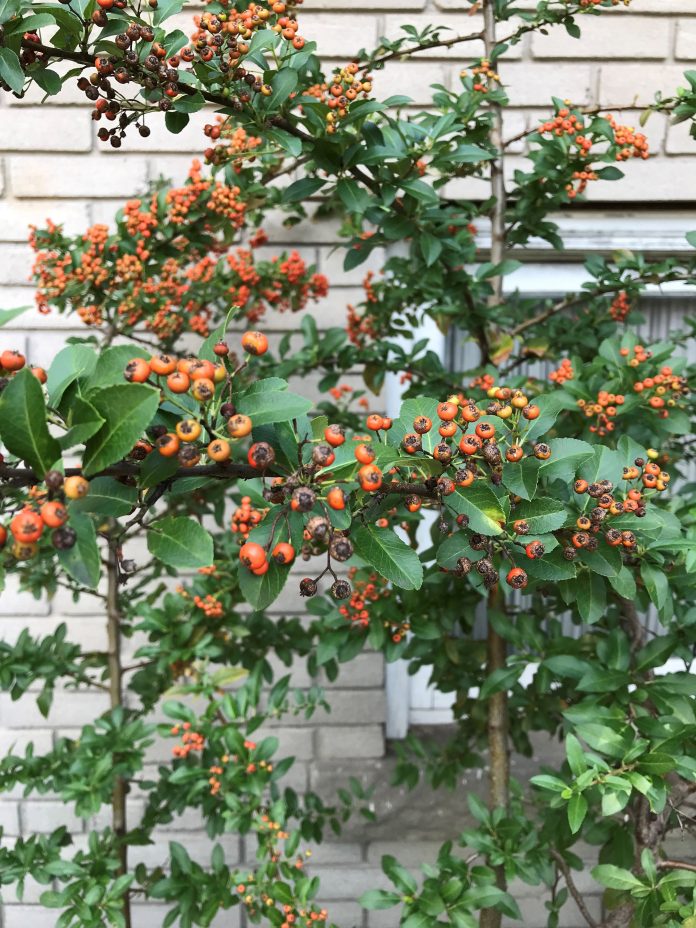Some plants are the kickboxers of the plant world. They arm themselves with a sharp defence we generally refer to as thorns.
Planting thorny shrubs and trees around your house does not have to be entirely negative, merely a suggestion to anyone wanting to cut the corner of your property to get somewhere quickly, or to encourage foot traffic in another direction.
Make your point with this list of thorny vines and shrubs:
Hawthorn (Crataegus spp.) is a genus of trees and shrubs which include many species native to Ontario. Canadian Hawthorn (Crataegus canadensis) is a native tree that grows up to 10 metres in a wide variety of soil types. It flowers in early summer and produces berries (“haws”) which are popular with birds but generally mealy for human consumption. Besides, who wants to harvest from a thorny tree?
Brambles such raspberries and blackberries, speaking of harvest. Raspberries have dense, small thorns which appear like fuzz but anybody who has crossed them will tell you: they hurt. Blackberries tend to have singular, conspicuous thorns that will snag and prick with a slight hook that seems to reach out and grab you. Best planted in moist, fertile, and well drained soils during early spring and maintained by pruning old fruiting canes to the ground after harvest each year. Wear thick leather gloves for the job. A dense thicket of berries along the property line is sure to stop anyone in their tracks, even if they simply stop to enjoy your berries from the other side.
Firethorn (Pyracantha spp.) is marginally hardy in zone 5, which would therefore do best in a protected area with lots of sunlight. White flowers become yellow, orange, or red berries with green foliage and large thorns. While commonly planted as a barrier shrub, it can also be trained to an espalier or trellis. Mark grew up with Firethorn (well named) growing on his childhood house over the garage wall. He learned the hard way not to fall into it.
Roses are an obvious option, so broad and diverse we could devote an entire column. A climbing rose such as Rosa ‘Alexander Mackenzie’ can be trained up a trellis or fence to act as a flowering deterrent to unwanted foot traffic. Rugosa roses are the parent of many shrub roses which have a long flowering period from early summer to first frost and each stem is covered in very sharp thorns. Attractive to pollinating insects and butterflies, the flowers give way to rosehips which are devoured by birds throughout the winter or can be used for jams and jellies. Resistant to heavy pruning, fit the mature size of the rose bush to the space you wish to fill.
Hollies (Ilex spp.) A diverse genus, with some native varieties to Ontario such as Ilex verticillata or Winterberry which does not have thorns. Ilex aquifolium, or English holly, has red berries and glossy evergreen leaves which come to a prickly point. Available in easy to manage dwarf varieties, you can prune your holly and berries for plentiful Christmas décor.
Black Locust (Robinia pseudoacacia) is a native tree to Ontario which produces branched thorns on its trunk and limbs up to 30cm (12in) long. Maturing into a large shade tree, the seeds and seed pods have a honey and castor-oil like taste which gives the tree its name, and are attractive to deer, squirrels, and quail. Is it a tree or a weapon?
Japanese Barberry (Berberis thunbergii). A versatile, low growing shrub that was once a popular choice for hedging, now used as an accent plant in any sunny garden. Each bush is loaded with needle sharp, short thorns that would discourage any burglar not dressed in leather motorcycle gear. Look for green or red barberry. Hardy to zone 3 (Regina).
Note that special gloves have been designed that withstand the prickly nature of most plant-born thorns. They are expensive but worth it. Mark has three pairs, want one?
Enjoy a garden that provides food, shade, colour, and a touch of self-defense.
Mark Cullen is an expert gardener, author, broadcaster, tree advocate and Member of the Order of Canada. His son Ben is a fourth-generation urban gardener and graduate of University of Guelph and Dalhousie University in Halifax. Follow them at markcullen.com, @markcullengardening, and on Facebook.
18.9 C
Prince Albert
Friday, July 26, 2024


